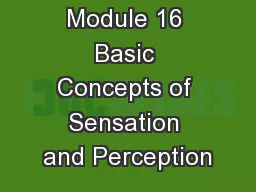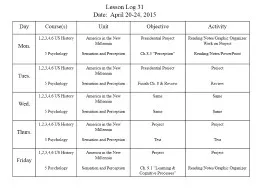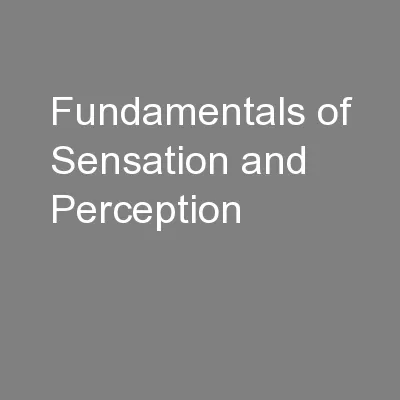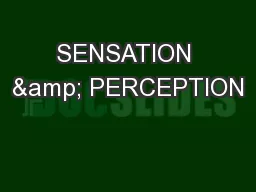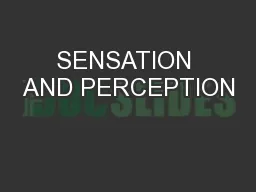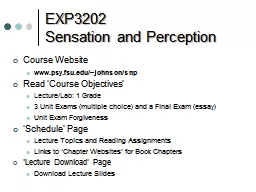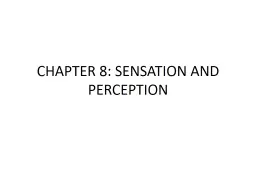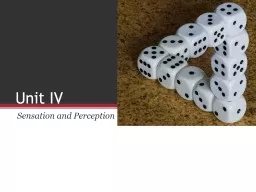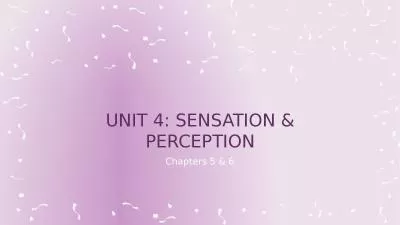PPT-Module 16 Basic Concepts of Sensation and Perception
Author : pamella-moone | Published Date : 2018-03-17
161 WHAT ARE SENSATION AND PERCEPTION WHAT DO WE MEAN BY BOTTOMUP PROCESSING AND TOPDOWN PROCESSING Sensation and perception are actually parts of one continuous
Presentation Embed Code
Download Presentation
Download Presentation The PPT/PDF document "Module 16 Basic Concepts of Sensation an..." is the property of its rightful owner. Permission is granted to download and print the materials on this website for personal, non-commercial use only, and to display it on your personal computer provided you do not modify the materials and that you retain all copyright notices contained in the materials. By downloading content from our website, you accept the terms of this agreement.
Module 16 Basic Concepts of Sensation and Perception: Transcript
Download Rules Of Document
"Module 16 Basic Concepts of Sensation and Perception"The content belongs to its owner. You may download and print it for personal use, without modification, and keep all copyright notices. By downloading, you agree to these terms.
Related Documents

